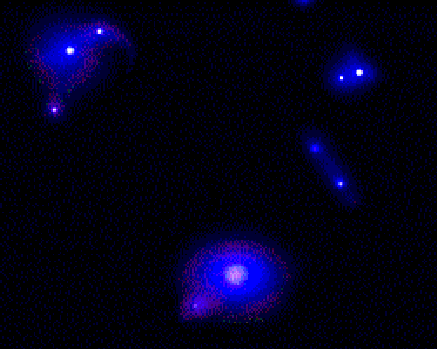Credit & Copyright: S. Pascarelle
(Arizona State U.)
Explanation:
What did the
universe look like two billion years after the
Big Bang?
According to
this computer model,
the universe was filled with irregular looking objects like the ones shown above.
The simulation then predicts that these blobs of stars and gas collide to form galaxies
more similar to the ones we see today. In fact, this simulation bears much resemblance
to
recent pictures of distant galaxies taken by the
Hubble Space Telescope.
Galaxy formation
is a complex phenomena which only now is becoming understood. Did most galaxies
form 5 billion years ago - or 10 billion? Did galaxies fragment from larger sheets
of matter, or are they conglomerations of many smaller clumps? Simulations like
this one are helping to determine the answer.
1999 2000 2001 2002 2003 2004 2005 2006 2007 2008 2009 2010 2011 2012 2013 2014 2015 2016 2017 2018 2019 2020 2021 2022 2023 2024 2025 |
Yanvar' Fevral' Mart Aprel' Mai Iyun' Iyul' Avgust Sentyabr' Oktyabr' Noyabr' Dekabr' |
NASA Web Site Statements, Warnings, and Disclaimers
NASA Official: Jay Norris. Specific rights apply.
A service of: LHEA at NASA / GSFC
& Michigan Tech. U.
|
Publikacii s klyuchevymi slovami:
big bang - galaktiki - obrazovanie galaktik - dalekie galaktiki
Publikacii so slovami: big bang - galaktiki - obrazovanie galaktik - dalekie galaktiki | |
Sm. takzhe:
Vse publikacii na tu zhe temu >> | |
